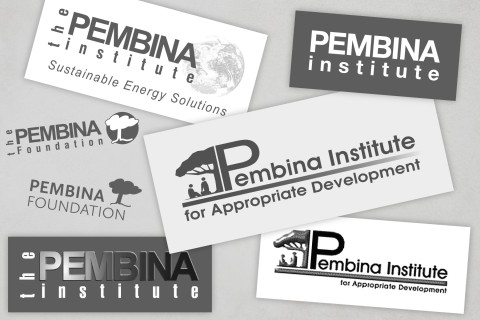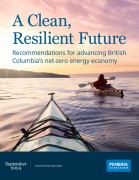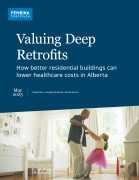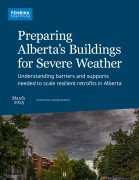Alberta governments and utilities could be helping its most financially vulnerable households escape energy poverty while unlocking significant economic development opportunities. Our report Affordable Home Energy for All: How Alberta can help its most vulnerable households escape energy poverty – written in partnership with the Alberta Ecotrust Retrofit Accelerator program – highlights the importance of addressing energy poverty in Alberta by investing in affordable, energy-efficient solutions that also improve health, resilience, and long-term affordability for low-income households. Investing $212 million per year in this housing stock segment could help grow the retrofit market, stimulate $850 million per year in GDP growth, and create 42,700 long-term jobs by 2050 in communities throughout Alberta.
As energy prices and cost-of-living concerns continue to rise, Alberta’s most vulnerable households are experiencing the impacts firsthand. Energy poverty – which refers to the struggles some households face in affording essential energy needed to heat, cool, and power their homes – affects six per cent of low-income households in Alberta. These households often reside in older, less energy-efficient buildings, making them more vulnerable to fluctuating energy prices and extreme weather impacts.
Note: This report was revised in February 2025 to revise the figure in Table 2 for annual utility cost savings by 2050 to $65 million/yr (from $1.7 billion/yr).
Key findings
- In Alberta, 6% of low-income households are living in energy poverty.
- These households often have lower incomes and live in poorer quality housing, making them vulnerable to energy price fluctuations and extreme weather events.
- Deep retrofits and efficient heating solutions like heat pumps can reduce energy costs, improve indoor air quality, and enhance resilience for low-income households.
- A dedicated investment in retrofits for these households offers a sustainable approach that moves beyond temporary relief and provides long-term benefits for both Alberta’s economy and its communities.
- Affordable heating and cooling in Alberta are closely linked to the quality of residential buildings.
- Energy-efficient homes are essential to protect vulnerable households from high energy costs and the impacts of extreme weather, ensuring that all Albertans can live safely and affordably.
Recommendations
Alberta’s local and provincial governments, as well as utilities, can take direct action to help reduce energy poverty and make homes healthy, safe, and more affordable to heat and cool. Here are some of our recommendations:
- Collaborate with local governments to define energy poverty and collect the data needed to determine the number of households, including building types that are facing energy poverty.
- Establish a province-wide retrofit program with cross-cutting objectives on resilience, energy efficiency and energy affordability.
- Build a robust, sustained fund for 100% publicly funded deep retrofits to lift households out of energy poverty and make their homes more resilient.
- Use regulatory and performance standards, such as alterations to existing buildings or retrofit codes, highest efficiency equipment standards, and standards of maintenance bylaws, to provide all Albertans with safe and resilient homes.
- Implement regulation to enable utility demand-side management (DSM) to establish the governing framework for utility programs and actions that support customers in reducing energy use.
With strategic investments and policy changes, Alberta can address energy poverty, reduce the economic strain on low-income households, and create a more resilient future, while providing a beachhead market for retrofit industry growth.

The Pembina Institute acknowledges the generous support of the Alberta Ecotrust Foundation.









